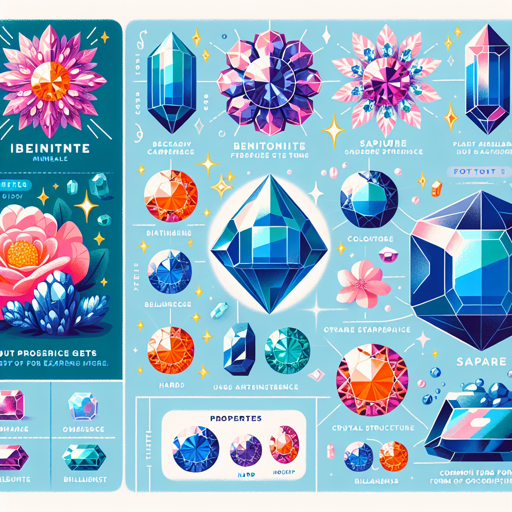Benitoite versus Sapphire: A Deep Dive into the World of Gemstones
A comprehensive comparison of the properties and uses of the intriguing Benitoite and the classic Sapphire gemstones.

Introduction
Gemstones have fascinated mankind for thousands of years, with their striking colors, unique characteristics, and perceived powers. Among them, Benitoite and Sapphire stand out with their mesmerizing blue hues. While Sapphires have been widely used in jewelry and have a recognized status, Benitoites are less known but equally intriguing due to their rarity and unique optical properties.
Benitoite and Sapphire: A Comparative Overview
Benitoite, named after San Benito County in California where it was first discovered, is a rare blue barium titanium silicate mineral. Its intense blue color, coupled with its high dispersion, makes it a highly prized gemstone among collectors.
On the other hand, Sapphire, derived from the Greek word ‘sappheiros’ meaning blue, is a variety of the mineral corundum. Although it is popularly known for its blue variety, it can be found in a range of colors, except red.
“Every mineral has a tale to tell. If we can listen to it, we can understand the very history of our planet.” - Anonymous
Physical Properties
| Property | Benitoite | Sapphire |
|---|---|---|
| Color | Blue | Varies (Blue, Yellow, Purple, Orange, Green) |
| Crystal System | Hexagonal | Trigonal |
| Hardness (Mohs scale) | 6-6.5 | 9 |
| Specific Gravity | 3.65 | 3.95-4.03 |
Uses of Benitoite and Sapphire
Due to its rarity and value, Benitoite is primarily used as a collector’s gemstone and not typically used in jewelry. It’s also the official state gem of California.
Sapphires, due to their hardness and variety of colors, are widely used in jewelry. They are often used in engagement rings and are also used in watches, scientific instruments, and high-durability windows.
External Reference
For more detailed information about these intriguing gemstones, you can visit the Gemological Institute of America.
Conclusion
Both Benitoite and Sapphire, with their individual characteristics, have their unique allure. While Sapphire continues to captivate with its traditional elegance and durability, the enigmatic and rare Benitoite never ceases to intrigue collectors and geology enthusiasts alike. Understanding these gemstones’ properties and uses not only allows us to appreciate their beauty but also the fascinating geological processes that gave birth to them.